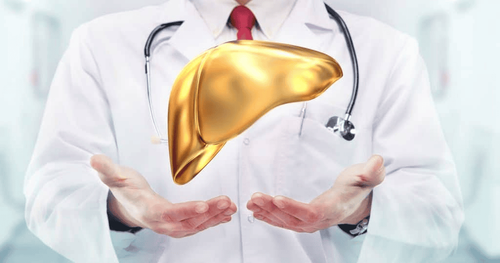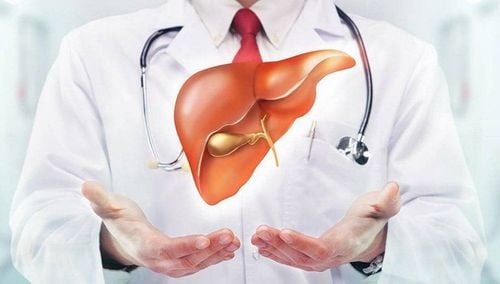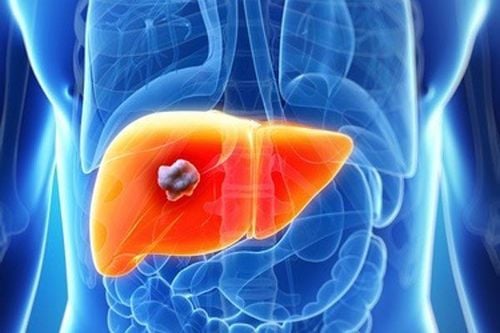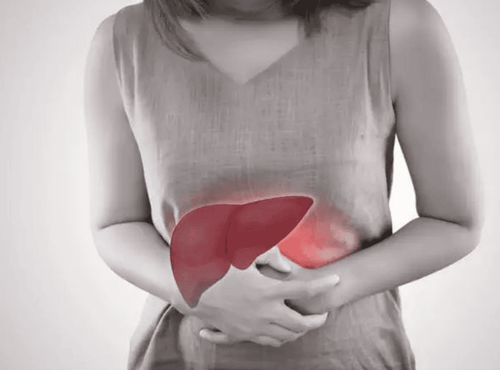This is an automatically translated article.
The article was professionally consulted with Master, Specialist Doctor II Phan Thi Minh Huong - Gastroenterologist - Department of Examination & Internal Medicine - Vinmec Danang International General Hospital.A pyogenic liver abscess is a purulent lesion of the liver caused by bacteria. Often, signs of bacterial liver abscess are difficult to recognize through clinical manifestations, which require laboratory tests. Bacterial liver abscess, if not detected and treated promptly, will leave dangerous complications and high mortality rate.
1. What is a bacterial liver abscess?
Bacterial liver abscess is the formation of infected pus-filled foci in the liver, which can be large or small, solitary or many different foci of pus caused by bacterial agents.Bacteria that cause liver abscesses are mostly secondary and can originate from intra-abdominal infections through the biliary tract accounting for 40%, portal vein 20%, hepatic artery 12%, trauma injury, invasion from infection due to perforation of hollow viscera, sometimes seen after retrograde cholangiography, liver biopsy ...
From specimens associated with bacterial liver abscess, people are often isolated Various bacteria cause liver abscess. Most of these bacteria usually originate from the intestinal tract such as: Klebsiella pneumoniae, Escherichia coli, Bacteroides, Enterococci...
In addition, it can be caused by staphylococci and pneumococcal bacteria that often cause disease after tooth infection or cause endocarditis.
Some features of bacterial liver abscess include:
Abscesses can have one or more foci, according to research, abscesses in right lobe are affected in 74%, left lobe 16% and both lobes are affected. ten%. Men have a higher risk of bacterial liver abscess than women with a ratio of 1.5/1. This condition is common in people with weakened immune systems, diabetes, the elderly, people with cirrhosis of the liver; In neonates, liver abscesses are often caused by complications of umbilical vein anastomosis.
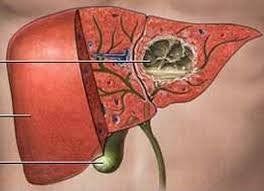
Áp xe gan do vi khuẩn là tổn thương mủ tại gan gây ra do vi khuẩn
2. Signs of liver abscess caused by bacteria?
2.1 Clinical signs Often, the clinical presentation of a bacterial liver abscess is nonspecific, which may include the following:The patient may have a history of infectious diseases of the biliary tract, foci, or bile ducts. Intra-abdominal infection, previous oral infection. Liver pain: Right upper quadrant pain is a common sign in most cases of liver abscess, this sign is seen in over 90% of patients. Pain increases with forceful breathing, pain radiates to the right shoulder. Fever: Usually occurs quite suddenly with high fever, may be accompanied by chills of 39 - 400C with dry lips, dirty tongue. Occasionally, some atypical cases may have no fever or mild fever. Digestive disorders: Signs of vomiting and nausea, loss of appetite, weight loss. can also be seen with liver abscess, but is not specific. When palpating the liver, it can be seen that the liver has a mass or is very painful when pressed. Patients can develop acute with aggressive manifestations or subacute course with unclear manifestations. Jaundice is a fairly common manifestation of bacterial infection, unlike amoebic infections, jaundice is rarely seen. 2.2 Subclinical signs Blood tests: Leukocytosis, especially neutrophils are elevated, there may be mild isochromic anemia, erythrocyte sedimentation rate increases. Liver function tests are less disturbed Blood chemistry: Increased ALP (alkaline phosphatase), ALT, AST, GGT, increased bilirubin is common in bacterial infections. Blood culture: Usually positive, common other than amoebic infection, usually not. Straight chest x-ray: Abnormal in about 50% of people with liver abscess. Manifestations as raised right diaphragm, possibly with pneumonia or pleural effusion. Abdominal ultrasound: Ultrasound has a relatively high sensitivity of about 80 to 95%, when ultrasound shows an abscess with signs of a spherical or oval mass and hypoechoic. Through ultrasound, it is possible to allow percutaneous aspiration of liver abscesses for diagnosis and ultrasound-guided drainage. Abdominal CT scan: It is also a very sensitive method from 95 to 100% to help detect abscesses in case of small or suspected small abscesses, allowing aspiration and drainage. Not only that, it helps to detect other abscesses in the abdomen or other diseases such as diverticulitis, appendicitis. On ultrasound, the mass will be less dense than the surrounding liver parenchyma, with unclear limits, if contrast is injected, there will be more obvious limits.

Biểu hiện trên lâm sàng của áp xe gan do vi khuẩn thường là sốt, đau tại vùng gan
3. How to treat bacterial liver abscess
The treatment is carried out on the principle of combining medical measures, surgical intervention when necessary.3.1 Medical treatment 3.1.1 Antibiotics Antibiotics are used as soon as the diagnosis of bacterial infection is confirmed to rule out bacteremia complications. The antibiotic of choice is the use of a 3rd generation cephalosporin antibiotic combined with an anaerobic antibacterial agent such as metronidazole as the most commonly used first-line treatment.
2nd choice when taking antibiotics: A penicillin combined with metronidazole.
Note when using antibiotics: The method of using antibiotics alone can be used when there is no lesion to liquefy the abscess, but if only using antibiotics alone, the complication rate is very high. Not only that, but antibiotic resistance is increasing day by day, so treatment may have to be prolonged.
3.1.2 Abscess aspiration Aspiration aspiration is a measure that helps diagnose disease and combine treatment, but patients often have to perform many times.
This method has the advantages of being simple, less invasive, low cost, can puncture many abscesses, and avoid problems with catheter care through drainage.
The success rate of this measure is usually around 60%.
3.1.3 Catheter drainage This is the method of choice in most cases of bacterial liver abscess with a high success rate. This method is used together with the use of antibiotics for high results.
Some cases are contraindicated for drainage such as: Abdominal fluid, blood clotting disorders.
Complications of this method include: Perforation of hollow viscera, hemorrhage, pneumothorax, leak of pus into the peritoneum.
3.2 Surgical treatment The surgical method is indicated when:
The abscess is ruptured, threatened to rupture and has signs of peritonitis. Treatment with aspiration or catheter drainage has failed. Larger or multi-walled abscess, solid pus, thick wall. Intra-abdominal pathology requiring surgical intervention such as appendicitis. Bacterial liver abscess can cause many dangerous complications and has a high risk of death, especially in immunocompromised cases, multiple abscesses. Early treatment is very important to limit the risk of death for the patient.
Please dial HOTLINE for more information or register for an appointment HERE. Download MyVinmec app to make appointments faster and to manage your bookings easily.




